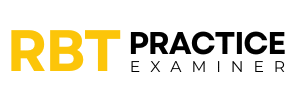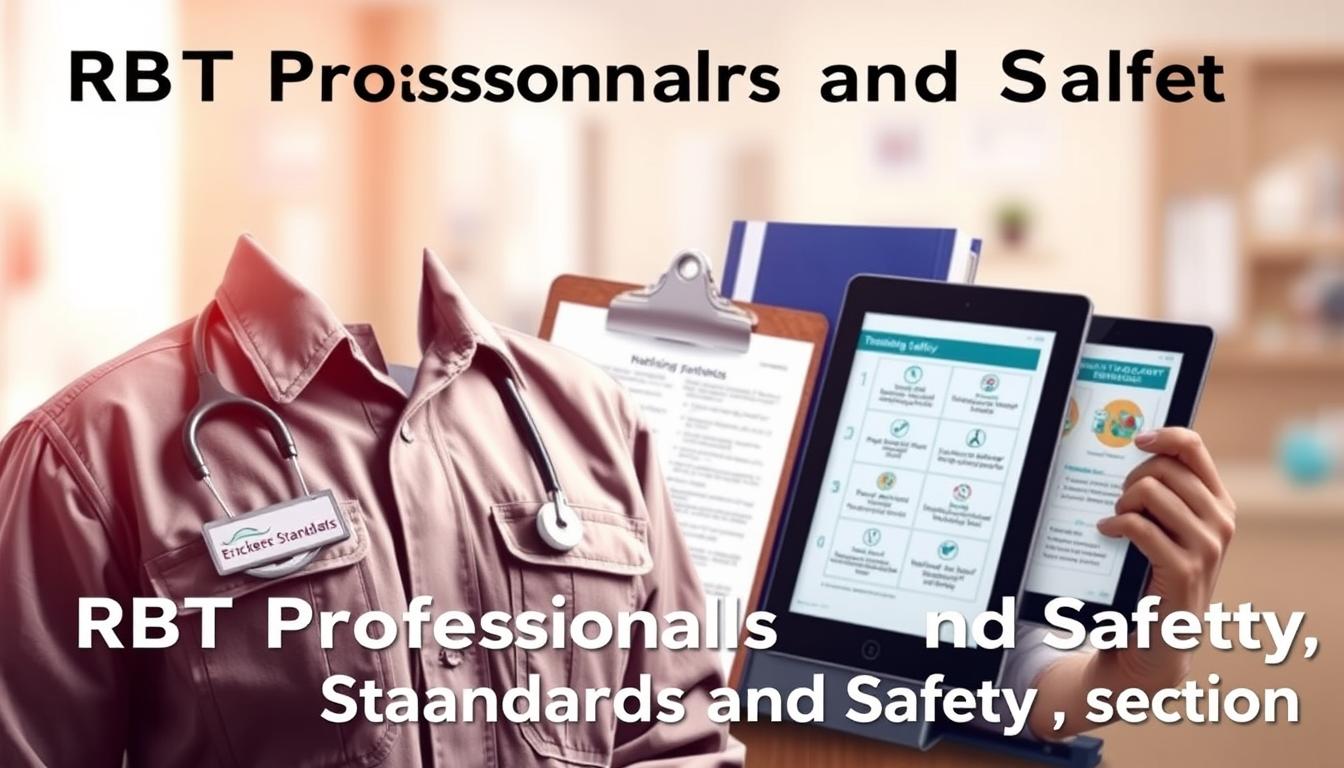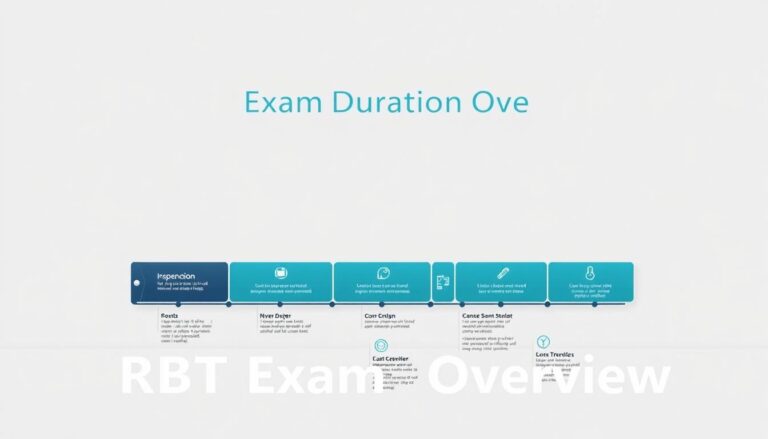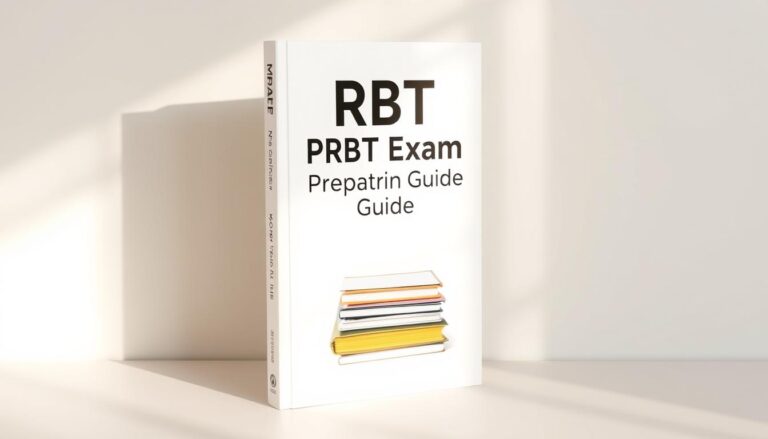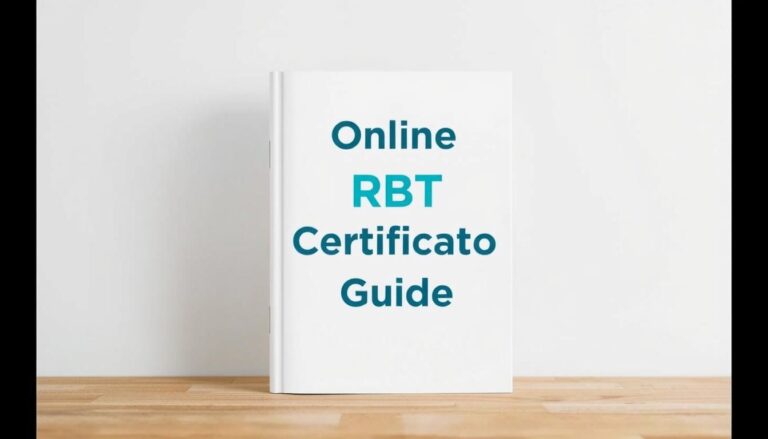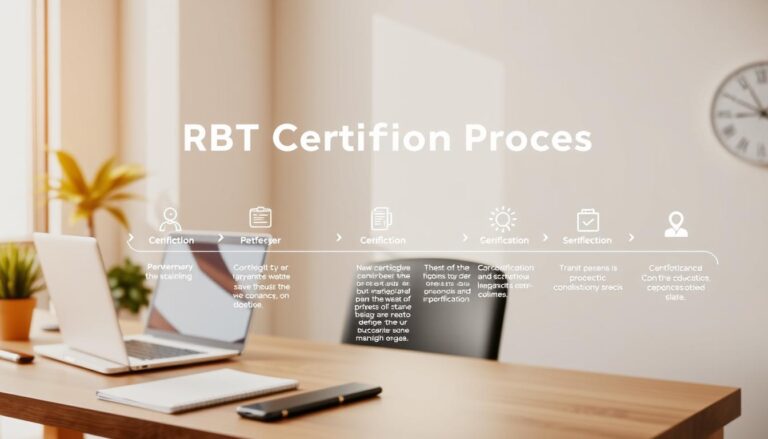Avoid These RBT Errors – For Everyone’s Safety!
Registered Behavior Technicians (RBTs) are key in helping people with behavioral issues. It’s important for them to know what not to do. This keeps their work safe and professional.
RBTs do more than just help with behavior. They must also follow strict ethics and care for their clients. Making mistakes can hurt the client’s progress and the trust between them.
The job of an RBT is to be very careful and follow rules closely. We will look at important areas where RBTs need to be extra careful. This is to protect both the clients and the RBTs themselves.
To avoid mistakes, RBTs need to keep learning and think about their actions. Every choice they make can change how well the client does and the quality of the help they get.
Understanding the Critical Role of Registered Behavior Technicians
Registered Behavior Technicians (RBTs) are key in behavioral healthcare. They help people with developmental challenges. They work with Board Certified Behavior Analysts (BCBAs) to use special strategies.
RBTs do many important tasks. They help make plans for behavior changes. They make sure these plans fit each person’s needs.
Core Responsibilities in Healthcare Settings
- Implementing behavior intervention plans
- Collecting and documenting precise behavioral data
- Conducting direct observation of client behaviors
- Supporting skill development and learning strategies
The Impact of RBT Services on Client Care
RBTs follow a code of ethics. This helps them give the best care. Their work helps clients in many ways.
- Promoting positive behavioral changes
- Enhancing communication skills
- Supporting personal independence
- Providing consistent, structured interventions
Legal Framework for RBT Practice
Professional standards and legal requirements guide RBTs. They must get certified by the Behavior Analyst Certification Board (BACB). This means they always follow strict rules and keep learning.
Which of the Following Should a RBT Not Do
Registered Behavior Technicians (RBTs) are key in helping people with behavioral issues. It’s important to know what not to do to keep things professional and safe for clients.
Looking at what RBTs should avoid, some behaviors are clearly wrong. Keeping professional boundaries and following ethical rules is essential in this job.
- Engage in personal relationships with clients
- Share confidential client information outside professional contexts
- Use physical restraint without explicit authorization
- Implement intervention strategies without supervision
- Ignore documented treatment protocols
Doing the wrong thing can hurt client care and damage a RBT’s reputation. They must always make ethical choices and follow the rules.
| Inappropriate Behavior | Potential Consequences |
|---|---|
| Boundary Violations | Loss of professional certification |
| Unauthorized Intervention | Client safety risks |
| Confidentiality Breaches | Legal and ethical violations |
RBTs need to always check their actions, focusing on the client’s well-being and high-quality care.
Essential Boundaries in RBT-Client Relationships
Registered Behavior Technicians (RBTs) must keep professional boundaries to provide the best care. They need to balance being supportive and keeping a safe distance.
Setting clear boundaries is key for RBTs and their clients. These boundaries help create a safe space for growth and learning.
Professional Distance and Emotional Boundaries
RBTs must handle emotional connections with care. Here are some strategies:
- Always act professionally
- Don’t form personal friendships with clients
- Stay neutral during sessions
- Know and manage your emotions
Social Media and Personal Contact Guidelines
Online interactions need strict rules. RBTs should follow these:
- Don’t connect with clients on personal social media
- Keep professional accounts private
- Don’t talk about clients online
- Share little personal info
Gift-Giving and Financial Boundaries
Money matters can blur professional lines. RBTs should stick to these rules:
| Boundary | Appropriate Action |
|---|---|
| Gift Receiving | Politely decline personal gifts from clients |
| Financial Interactions | Avoid giving or taking money outside work |
| Personal Loans | Never lend money to clients |
Professional boundaries are vital for quality care and keeping the relationship strong.
Common Documentation and Record-Keeping Mistakes

Keeping accurate records is key for RBTs. They must document everything carefully. This ensures quality care for clients and keeps both the RBT and client safe legally.
To avoid harm, RBTs need to know about common mistakes in documentation. Poor record-keeping can hurt client care and lead to big problems for the RBT.
- Delay in documenting client interactions
- Vague or subjective language in progress notes
- Failing to document behavioral interventions accurately
- Inconsistent reporting of client progress
- Neglecting to include specific behavioral observations
Following best practices means documenting everything right away. Every client interaction should be written down immediately after it happens. This includes important details like:
- Specific behavioral objectives
- Intervention strategies used
- Client responses and progress
- Any significant incidents or challenges
Good documentation protects both the RBT and the client. It makes a clear, open record of treatment. Supervisors use these notes to check on progress, change plans, and make sure care is complete.
Using digital tools for documentation can help RBTs keep records right and consistent. Tools with standard templates and live tracking can cut down on mistakes and make keeping records easier.
Maintaining Client Confidentiality and Privacy
Keeping client privacy safe is a key job for Registered Behavior Technicians (RBTs). It’s not just right; it’s a must for keeping trust and protecting personal info.
The RBT code of ethics requires strict privacy rules in all work. Healthcare pros need to know how to keep client data safe in different situations.
HIPAA Compliance Requirements
RBTs must follow HIPAA rules closely to keep client info safe. Important steps include:
- Securing all written and digital client records
- Limiting information sharing to authorized personnel
- Using encrypted communication channels
- Implementing strict access controls
Social Media Privacy Concerns
Digital spaces can be tricky for keeping client secrets. RBTs should:
- Never discuss client details online
- Avoid identifying client information
- Maintain professional boundaries on social networks
- Use privacy settings to protect personal and professional information
Information Sharing Protocols
Clear rules for sharing info help RBTs deal with privacy issues. Professional discretion is key in all client interactions.
Talking with supervisors and team members needs careful thought. RBTs must keep client privacy in mind while sharing info for care.
Ethical Decision-Making in Challenging Situations

Registered Behavior Technicians (RBTs) often face tough situations. These tests their professional conduct and ethics. They need a clear way to make ethical decisions, focusing on client safety and integrity.
The RBT code of ethics is a key guide for these tough cases. It helps professionals create a strong plan for dealing with ethical problems that come up with clients.
- Recognize possible ethical challenges early
- Consult with supervisors and team members
- Document decision-making processes thoroughly
- Prioritize client well-being above personal interests
Ethical decision-making is not about finding perfect solutions, but about making thoughtful choices that respect professional conduct for RBT and protect client interests.
Key steps in ethical problem-solving include:
- Identify the ethical concern
- Gather relevant information
- Consider possible outcomes
- Consult ethical guidelines and supervisors
- Make a well-reasoned decision
- Reflect on the outcome
RBTs must keep learning and reflecting on themselves. Growing professionally means looking at hard situations critically and learning from them.
When facing ethical dilemmas, remember that asking for help is a sign of strength, not weakness. Your main job is to provide the best care for your clients while keeping your professional integrity.
Professional Communication Errors to Avoid
Effective communication is key for RBT professionals. They must handle complex talks while keeping high standards. This is important for their work.
Good communication means being clear, respectful, and smart in many situations. If we mess up, it can hurt our clients and our work relationships. So, being good at talking is very important.
Team Communication Best Practices
Good team talks need a few important steps:
- Speak clearly and to the point about client progress
- Write down what you say in reports
- Listen well in team meetings
- Keep a professional tone in everything you say and write
Client Family Interaction Guidelines
Talking to client families needs a lot of care and professionalism. RBTs must be kind but also keep their distance.
- Always be respectful and caring
- Share clear updates on how the client is doing
- Don’t share your own thoughts or stories
- Stick to professional ways of talking and writing
Being good at talking is always getting better for RBTs. It helps them support clients well and work well with others in healthcare.
Safety Protocol Violations and Prevention

Registered Behavior Technicians (RBTs) are key in keeping clients safe. They must follow strict safety rules and know their full job duties.
Keeping clients safe in behavioral health settings is a big job. RBTs need to watch out for risks and stop them before they start.
- Conduct thorough initial risk assessments
- Implement preventative safety strategies
- Maintain constant environmental awareness
- Document possible safety issues right away
There are a few main areas where safety issues can happen:
| Safety Risk Area | Potential Consequences | Prevention Strategy |
|---|---|---|
| Physical Environment | Client injury | Regular safety checks |
| Communication Breakdown | Misunderstood actions | Clear notes and supervision |
| Inadequate Supervision | Unapproved client interactions | Always have a pro nearby |
Being very careful is the main way to avoid safety problems. RBTs should always learn new things, go to training, and talk to their bosses to keep clients safe.
Seeing risks needs training, being aware of what’s going on, and sticking to what’s right. By focusing on safety, RBTs can make places where clients feel safe and supported.
Inappropriate Behavioral Intervention Techniques
Registered Behavior Technicians (RBTs) are key in helping those with behavioral issues. They must know the right ways to help, avoiding harmful methods. This is vital for quality care and keeping clients safe.
Good RBTs follow strict, ethical, and proven methods. Wrong approaches can hurt clients and damage a technician’s reputation.
Restricted Intervention Methods
RBTs need to know which methods are wrong or risky:
- Physical restraint without clear need
- Punishment-based methods
- Verbal shaming or humiliation
- Strategies that ignore client freedom
- Interventions without scientific backing
Alternative Intervention Strategies
Good behavior help needs kindness and science. Here are some good ways to help:
- Positive reinforcement
- Functional behavior assessment
- Working together on goals
- Plans made just for each client
- Person-centered approaches
Great RBTs focus on respect, safety, and growth. They use methods backed by science and support their clients.
Time Management and Scheduling Mistakes
Registered Behavior Technicians (RBTs) have to manage their schedules well. Good time management is key to doing their job well and keeping professional standards high.
Making scheduling mistakes can hurt how well you care for clients and your professional image. RBTs need smart ways to handle many clients’ needs. They also need to keep their records up to date and work efficiently.
- Avoid overbooking clients
- Create realistic time buffers between appointments
- Utilize digital scheduling tools
- Prioritize documentation immediately after sessions
Here are some important time management tips:
- Consistent schedule planning
- Accurate session tracking
- Efficient administrative task management
RBTs should use clear strategies to avoid common scheduling mistakes. Being on time shows you’re committed and builds trust with clients.
| Time Management Challenge | Recommended Solution |
|---|---|
| Overlapping appointments | Use digital calendar with built-in alerts |
| Inadequate preparation time | Schedule 15-minute buffer between sessions |
| Documentation backlogs | Complete notes within 24 hours of session |
Professional RBTs know that managing time well is more than just scheduling. It’s about providing consistent, quality behavioral intervention services.
Supervision Requirements and Common Violations
Registered Behavior Technicians (RBTs) work under strict rules. They must follow high standards of practice closely. This is done through constant supervision and guidance.
Supervision is key for quality care and growth. RBTs must follow strict guidelines. These rules protect clients and the technician’s career.
Required Supervision Hours
The RBT code of ethics sets clear supervision rules. These rules help keep skills sharp. Key points include:
- At least 2 hours of direct supervision each month
- Supervise at least 5% of all treatment hours
- Have monthly face-to-face or video meetings
Documentation of Supervision
Keeping accurate records is vital for RBTs. Supervisors need to write down all supervision talks.
| Supervision Component | Documentation Requirements |
|---|---|
| Direct Observation | Written feedback forms |
| Monthly Meetings | Signed meeting logs |
| Performance Review | Quarterly competency assessments |
Not meeting supervision rules can lead to losing certification. RBTs must work closely with their supervisors. This ensures they meet standards and care for clients well.
Effective supervision is not just a requirement—it’s a cornerstone of professional growth and client safety.
Maintaining Professional Competency
Being a top-notch Registered Behavior Technician (RBT) means always learning and getting better. It’s all about keeping up with new research and methods to give the best care to clients. This is key for RBTs to keep their professional standards high.
To stay sharp, RBTs need to focus on a few important things:
- Pursue ongoing education and certification opportunities
- Attend specialized workshops and conferences
- Engage in regular peer supervision and professional networking
- Stay updated with latest behavioral intervention research
Here are some ways to boost your skills:
- Continuous Learning: Make sure to take annual training programs
- Skill Assessment: Check your performance regularly
- Research Engagement: Read the latest in behavioral health journals
| Professional Development Area | Recommended Actions | Frequency |
|---|---|---|
| Clinical Skills | Advanced intervention techniques training | Annually |
| Ethical Practice | Ethics certification renewal | Every 2 years |
| Technology Integration | Digital intervention tool workshops | Bi-annually |
By focusing on professional growth, RBTs can offer the best support to their clients. This support is both effective and compassionate, using the latest in behavioral support.
Crisis Response and Emergency Protocol Errors
Registered Behavior Technicians (RBTs) are key in handling emergencies well. They must be ready and quick in their actions. This is to avoid harm and keep clients safe.
Emergency plans need to be precise and calm. RBTs do more than just daily tasks. They also handle crises fast and right. Knowing common mistakes helps keep clients and professionals safe.
- Recognize crisis triggers
- Develop clear communication strategies
- Practice systematic emergency response techniques
- Maintain emotional regulation during high-stress scenarios
Some common mistakes in emergency responses are:
- Panicking instead of staying calm
- Not talking enough with the team
- Not writing down what happened during emergencies
- Not getting enough training for emergencies
Good RBTs keep learning and practicing. They prepare for challenges and have strong plans. This way, they can lower risks and keep clients safe.
Regular team talks and practice help RBTs get better at emergencies. They stay ready and skilled, even when it’s tough.
Conclusion
Applied behavior analysis is more than just technical skills. Knowing what a Registered Behavior Technician (RBT) should not do is key to quality care. RBTs are essential in helping people with developmental challenges. Their actions greatly affect the outcomes for their clients.
The RBT code of ethics is a guide for them. It helps them stay within professional boundaries and make ethical decisions. This way, they avoid mistakes that could harm clients or reduce treatment success. Always learning and checking oneself is important in this field.
For RBTs, growing professionally means constant learning and self-improvement. They should always look for guidance and keep up with new practices. The goal is to offer care that is both caring and scientifically backed, meeting each client’s needs.
We suggest always striving to improve, follow ethics, and ask for help when needed. Your hard work in this field helps many people and families dealing with behavioral health issues.
